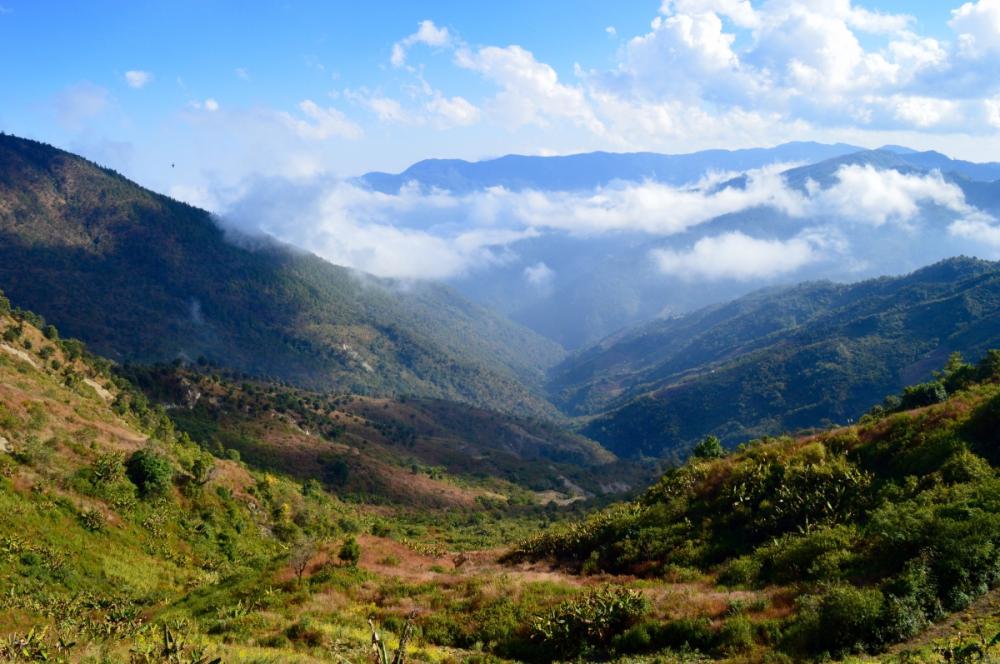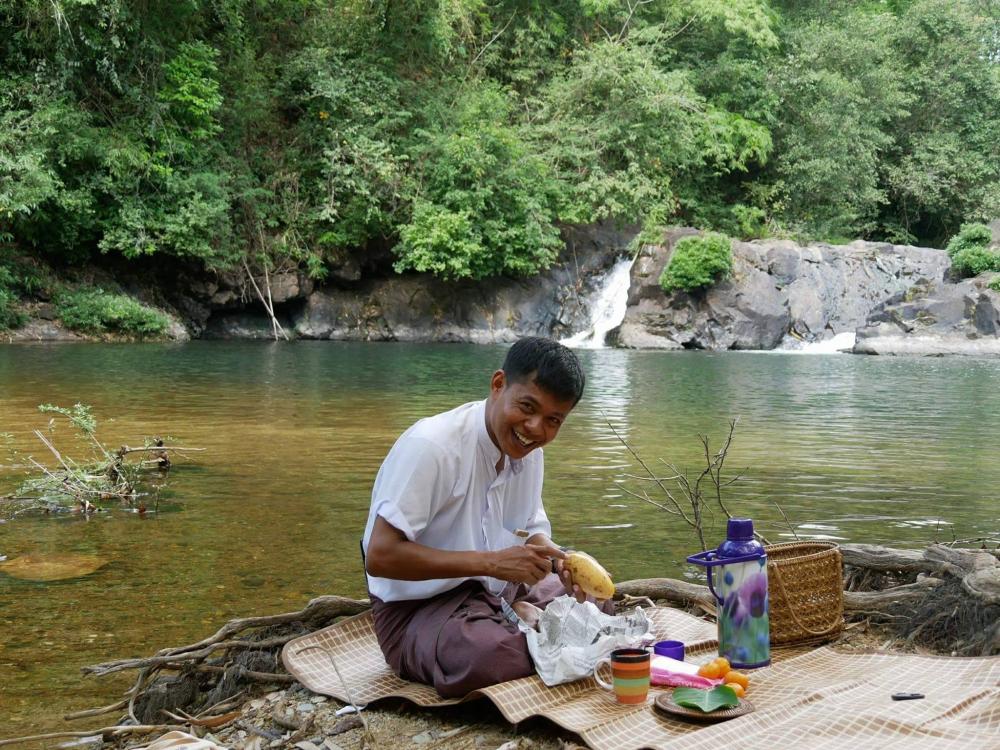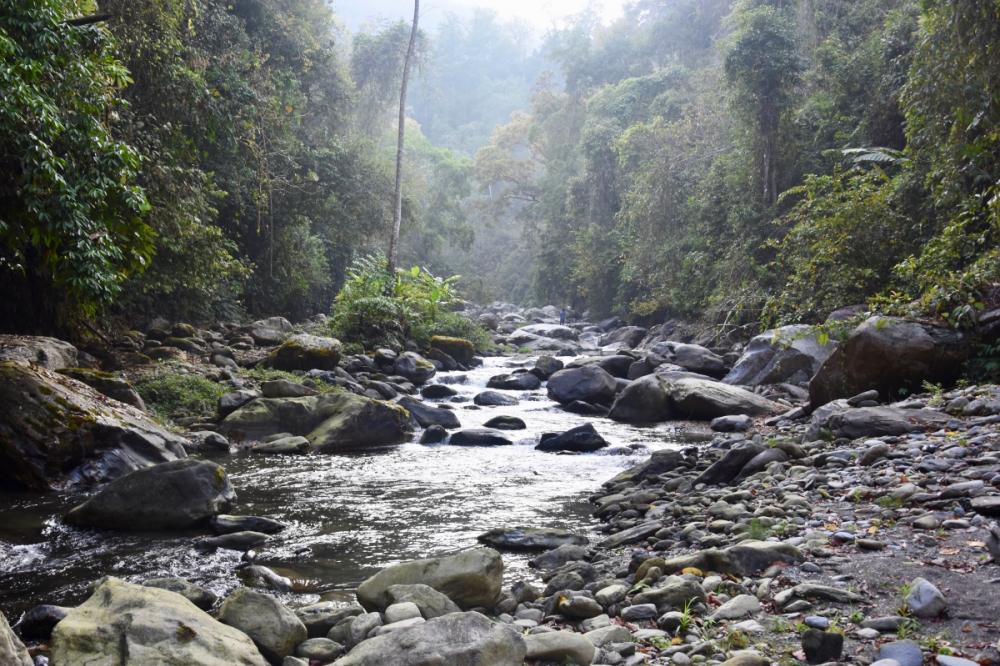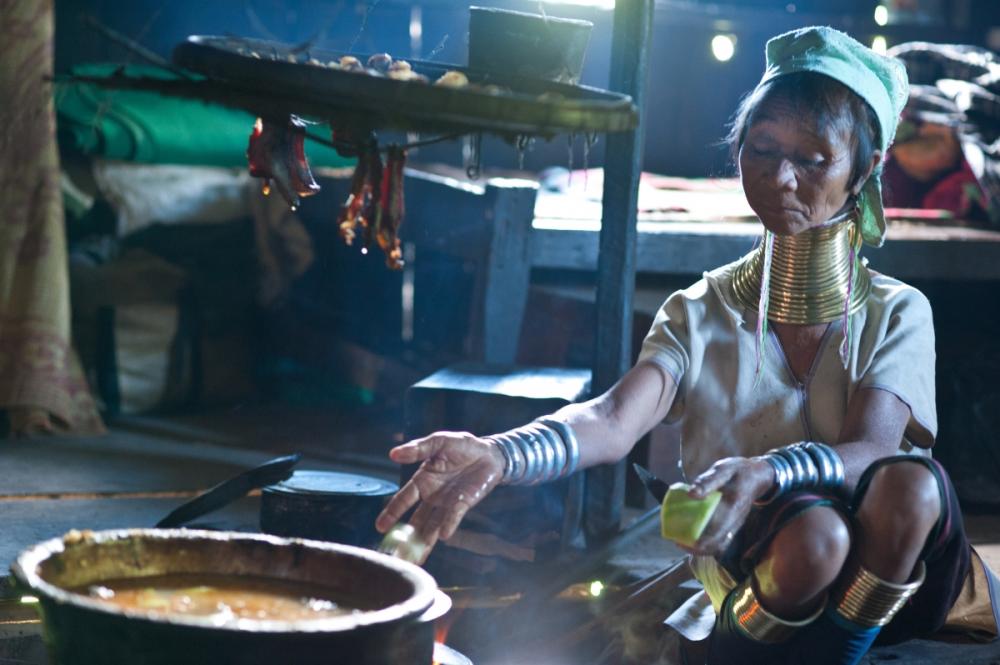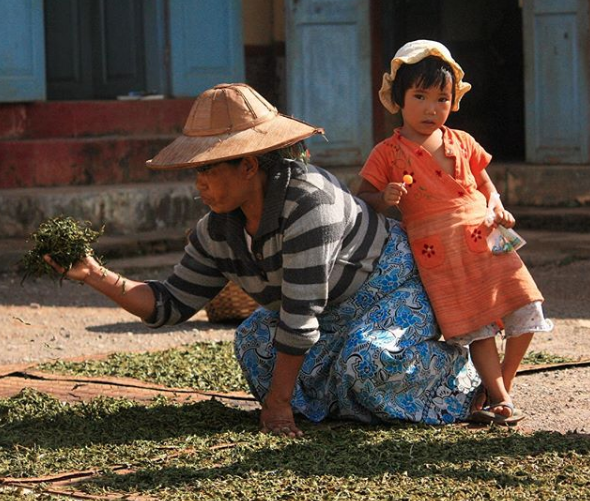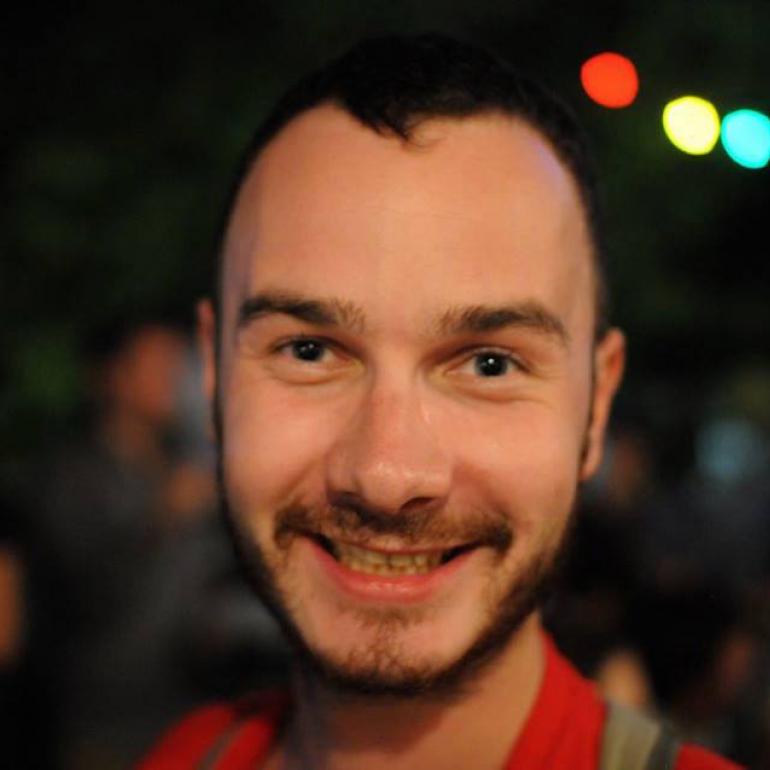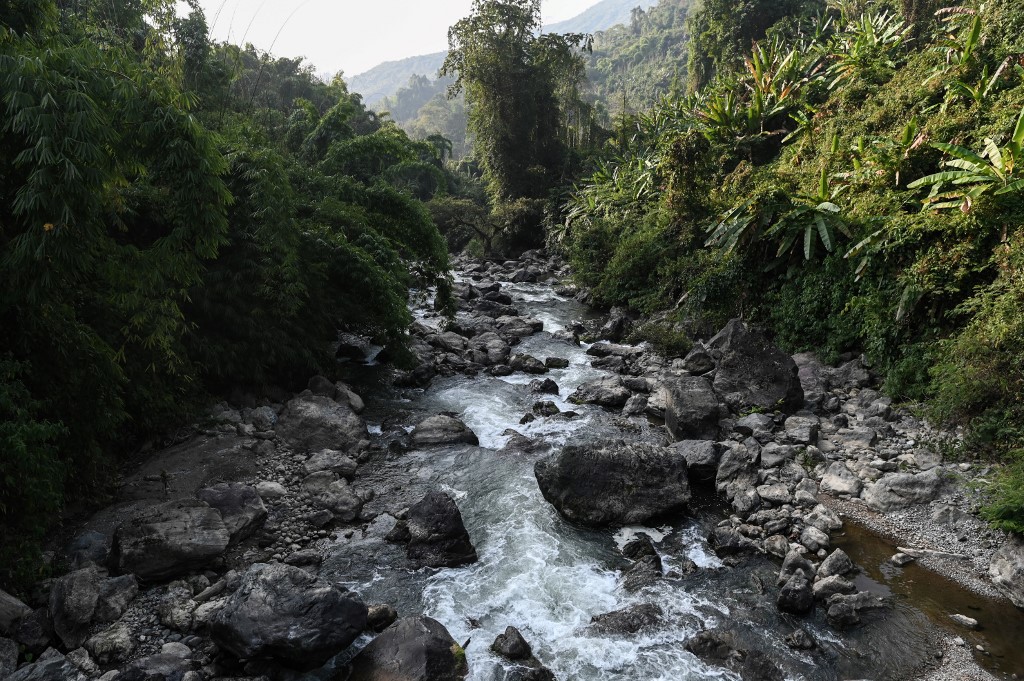
The old hill station of Kalaw and its hiking routes are charming, but beyond these well-trodden trails are boundless Myanmar adventures. From remote mountains to abandoned villages to orchards of pineapples and bananas, here are five of the best alternative treks.
Southern Chin state
With its fissured landscape and hardy, rosy-cheeked locals, Chin state has become a favourite destination for those seeking challenging hikes in Myanmar. Southern Chin (principally the towns of Mindat and Kanpetlet) is easier to reach than the north—travellers can hire a truck or 4X4 from Bagan or hop on the slap-dash local bus from Pakokku.
Crisp mornings are infused with the smell of thick Chin coffee. Before setting off, order a cup of this in a teashop (best with a wedge of lime) alongside a steaming bowl of millet porridge.
The trek that most people take is via the village of Kyardoe and then winding up towards the “basecamp” for Mount Victoria—southern Chin’s largest peak. Note that the main track leading up Mount Victoria has in the last few years become strewn with litter and polluted by motorbike taxis.
An alternative route is to climb up the back-end of Victoria—past Madat village. This is a steeper and more challenging ascent. And for this reason, quieter and more enjoyable.
Note: Local guides are often the best source of up-to-date information regarding the safety of trekking in different parts of the country. They are vital when travelling to potential conflict zones such as Chin and northern Shan states.
Inland Dawei
Most travellers to Dawei make a beeline for the peninsula to fall in a heap at Sin Htauk Beach or Paradise Beach Bungalows. And there is nothing wrong with that.
But efforts by the International Trade Center (ITC) and the Netherlands-based Center for Promotion of Imports (CBI) over the last few years have led to the creation of community-based tourism projects with the intention to persuade travellers to linger longer in Dawei and explore more of the area inland.
Up to the village of Kan Hla Kone, a guide from the community can lead travellers through the orchards of pineapples and bananas and past crops of cardamom, betel nut, cashew, and sweet potato.
This forest is also a living repository of traditional herbal medicines and your guide can show you the “forest pharmacy” where these remedies are stored.
You can be a led to some secret swimming spots to enjoy a picnic from the village. It is also possible to visit the “barefoot spa” to rest weary feet in the mineral water of Kan Hla Kone’s hot springs.
Nagaland
"Nagaland” refers to the Naga Self-Administered Zone created under the 2008 Constitution. It is one of the least-developed slivers of land in Myanmar, bordering India’s Nagaland state. The Naga people—a loose term for those living on both sides of the border—were infamous in the past for headhunting, but also well loved by Allied soldiers due to their assistance in scouting during the Second World War.
For a long time it was only possible to visit mountainous Nagaland during the Naga New Year Festival. However now the region is open to travellers any time of year without the need for a permit.
We recommend visiting outside the time of the new year festivities. Although the traditional costumes and dancing are impressive, in our opinion the festival has become an exercise in forced “jolly-ment” and largely dictated by Naypyidaw and large tour operators in Yangon.
As tourism is still very new here, do not be surprised if you find your reception to be wary and have children run from you! A guide in Nagaland is essential. However note that even the best guides have their own networks and are also limited by the dialects of Naga that they speak. For this reason, the hiking route you are taken on will largely be dependent upon your guide and who they can find to host you for the night.
With advance planning, we recommend flying up to Hkamti and from there making your way over the Chindwin to Lahe. Those wishing to see the traditional tattoos of the Naga should attempt to travel towards Longwa, in Lahe township.
Pan Pet
Little Kayah state is one of Myanmar tourism’s greatest success stories.
Kayah (formerly ‘Karenni’) is occupied by nine distinct ethnic groups; the largest is that of the Kayah and the second largest is the Kayan. The women of the Kayan people (also referred to as the “Padaung”) are well known for wearing the neck rings that make them appear to have remarkably long necks.
These ladies were carted around Britain in circuses during the colonial period, and even now can be seen in “human zoos” in Thailand, China and even at Inle Lake. Previously, visiting Kayah State was of a similar nature.
Today, thanks once more to the work of CBI / ITC, the agency of tourism to the villages of Kayah state has been put back into the hands of the community.
Travellers can trek around the village of Pan Pet with a guide from the community, enjoying a traditional picnic of Kayah sausage, visit abandoned villages and pass muddy tarns where buffalo wallow and young boys scramble about on the ground trying to catch crickets to use as bait on their fishing rods.
Pindaya's coffee and tea growing villages
Due to its proximity to Inle Lake and Heho Airport, Pindaya in Shan state is fast becoming a favourite place for trekking in Myanmar.
Pindaya is tea country and so up in villages such as See Kya Inn and Htwe Ni it is possible to meet farmers working in the fields and see leaves drying in the sun outside most houses. This becomes what we would call “black tea,” while the higher-quality “green tea” is dried in the factories dotted about the hills. Taking part in a tea tasting over lunch is an enjoyable way to learn more about Myanmar’s favourite drink.
Treks towards the west of Pindaya can take travellers past Shwe Umin—Myanmar’s answer to “Aladdin’s Cave”—while longer ones to the north lead towards the coffee-growing region of Ywangan where it is possible to visit the roastery of Genius and other brands familiar to those living in Yangon.

